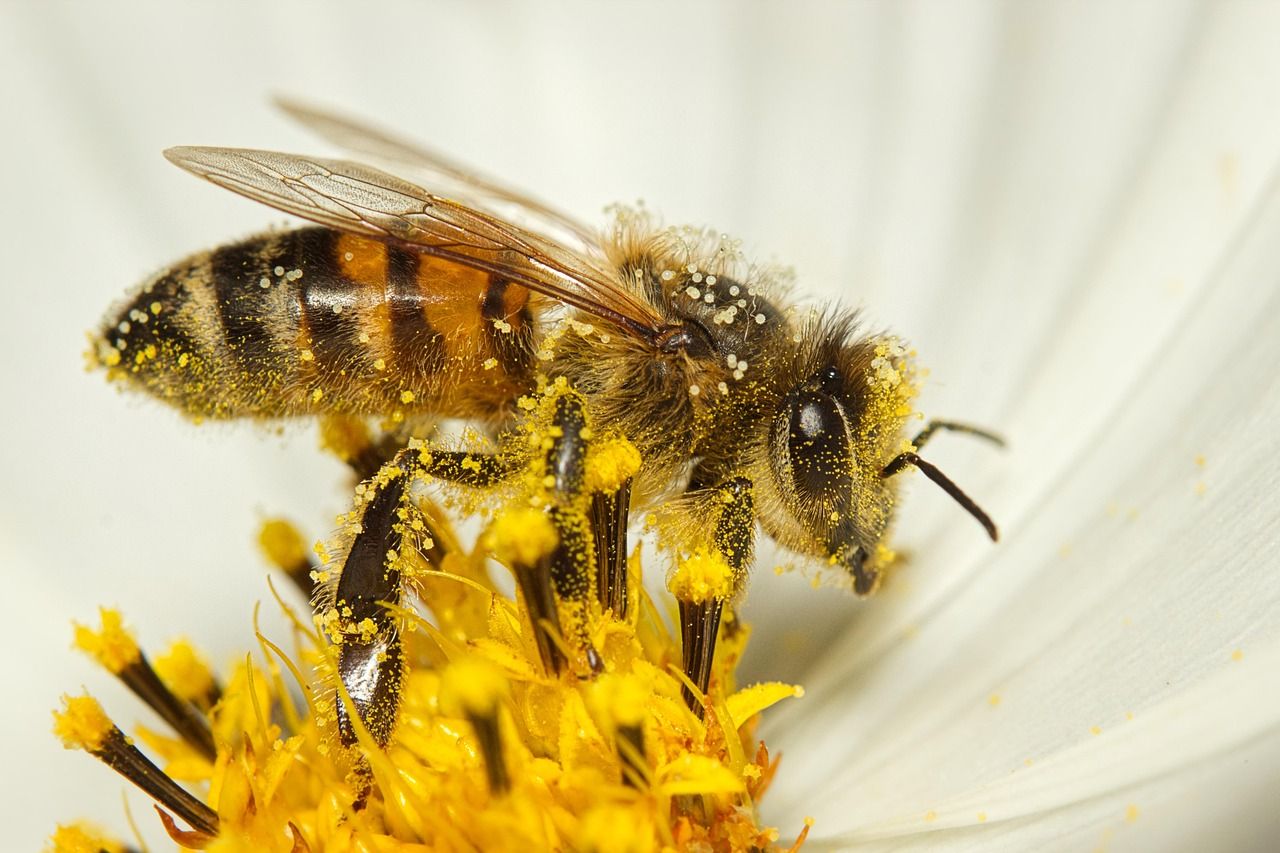Follow us on Google News (click on ☆)

A bee covered in pollen.
Illustration image Pixabay
Colors are one of the main signals used by flowers. They aren't just there to look pretty to our eyes, but to catch the attention of pollinators. For example, bees have vision that extends into the ultraviolet range, allowing them to perceive patterns invisible to the human eye, called nectar guides. These patterns are often arranged like landing strip beacons and lead directly to the center of the flower, where the nectar and pollen are located. This optimizes pollination efficiency, as the insect is guided to the exact spot where it needs to collect and deposit pollen.
Scent is another crucial element. Flowers produce volatile molecules, organic compounds that diffuse through the air. These substances, such as monoterpenes and sesquiterpenes, act as olfactory signals. Each flower develops a particular "bouquet" to attract a specific pollinator: some attract bees with sweet or fruity scents, while others emit stronger, even foul odors to attract flies and beetles. These scents are often emitted more intensely at certain times of day, depending on when the pollinator is active.
Nectar is the sweet reward promised to visitors. It's a liquid rich in sugars (glucose, fructose, and sucrose) but also in amino acids and minerals, providing a quick energy source and valuable nutrition for insects. In exchange for this resource, the insect carries pollen from one flower to another, enabling cross-fertilization and seed production.
Some flowers also offer directly consumable pollen. Pollen is an essential source of proteins and lipids for insects, particularly bees, which use it to feed their larvae. Flowers can thus develop structures like protruding anthers or sticky pollen grains to facilitate transport and collection.
Finally, some flowers adopt particular shapes, like tubular corollas or trap-like petals, which force the insect to come into contact with the reproductive organs, ensuring pollen transfer. This relationship between flowers and insects is the result of long coevolution: plants have developed strategies to seduce their visitors, and insects have specialized in exploiting floral resources. Together, they contribute to maintaining biodiversity and food production in our ecosystems.